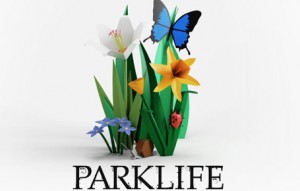parklife, 2010
The reason I had never attended Parklife before this year was probably for the same reason that anyone who hasn’t attended Parklife hasn’t attended Parklife: pill-popping faux-trendsters.
I had never even made a conscious assessment about whether to go or not, it was just inherently synonymous with something I didn’t want to do, kind of like licking a battery or sitting through a marathon of Jersey Shore. It’s not that it would necessarily be harmful, but it would have a level of sucking that I’d prefer to do without in my life.
But when the Dandy Warhols were announced on the line-up, it was a no-brainer. I was going to have to shell out $140 to spend the day with dilated pupils.
So I knew why I was there. As for everyone else, they were pill-popping faux-trendsters.
For whatever reason, electronica has become synonymous with ecstasy. But I don’t really care about this; my problem with Parklife is that electronic acts are rather unimpressive live, and many performances at the festival reiterated this fact.
But onwards and upwards with the actual review.
Melbourne’s event at Sidney Myer Music Bowl is difficult to navigate but after finding the two facilities most imperative to our enjoyment of the day – the toilets and the cocktail bar – my comrades and I manage to catch the end of Washington’s set, which probably isn’t the best thing for me to start this with given my rant about the lack of live bands. But Washington is as solid as she was at Splendour in the Grass, having obviously fine-tuned her performance over the years, and it shows.
The Darwin Deez, on the other hand, are not so impressive. Fronted by Darwin Deez (I still don’t really know what’s going on with the identical band/front man name business), he is joined onstage by three other people who, when we arrive, don’t appear to be playing any instruments. Fine, you might say, but they’re not touching anything and yet, music is playing. They entertain the crowd with mildly amusing but mostly poorly choreographed dance routines and I realise that my lack of musical ability and knowledge may not be the obstacle I once thought it was to being in an internationally known band. I start to wonder why I’m wasting precious time and energy at uni that could be spent taking drugs, getting laid, becoming emaciated and overusing words like ‘unified’, ‘locus’ and ‘energy’.
Kele, yet another front man to release a solo album, is pretty good and throws in a few Bloc Party songs to the delight of the crowd. He is cocky in Adelaide (yes, I went twice), however, blaming his late start on one of the crew, who admittedly may have been at fault, but who hardly deserves to be badmouthed by someone who has probably made more money than he ever will and whose audience still adores him.
Since the release of their second album earlier this year, I’d read a lot about New Young Pony Club without ever managing to actually listen to their music. I knew their latest album was a ‘departure’ from their debut, thanks to the oft-used language found in many music magazines, but my lack of access to the Internet at home meant that by the time I got myself to a computer, I usually forgot to check out bands that I’d read about.
So aside from ‘Ice Cream’, I’d never really heard anything by New Young Pony Club. And it turns out, I kind of love them. Aside from their brand of dance-funk-indie-pop (welcome to my inability to properly identify genre), front woman, Tahita Bulmer, is charismatic onstage and far friendlier than she might appear in most promo shots, as I find out after having a drunken ramble to her about feminism at the artists party in Adelaide (I don’t get kickbacks, I just get a lot of exercise pushing my luck and sometimes it pays off). Keyboardist Lou Hayter pulls off a simple side-step shuffle with more grace and sex appeal than I think anyone else can pull off, while drummer Sarah Jones and guitarist Andy Spence quietly achieve, so to speak, on the other side of the stage.
And, of course, my beloved Dandy Warhols. Both of their performances at Parklife begin with the opening track to Come Down, ‘Be-In’, and they rock through a well worn (I suppose this is always a hazard when you see a band six times in a year) set that nicely showcases tracks from across their discography. As in many aspects of life, Adelaide misses out to Melbourne, as the latter also features a couple of hula hoopers whose enviable muscle control has one of my friends wanting to start going to hula hooping classes.
Parklife professes itself to be an indie and dance music festival and I guess in all technicality, it is. There are enough live acts to appease those of us who don’t think that flying in DJs who stand on stage with a MacBook is a good use of budget, but all are nonetheless mostly compatible with the general mood of the festival.
But am I a Parklife convert? Probably not.



Pingback: interview: peter holmstrom, the dandy warhols